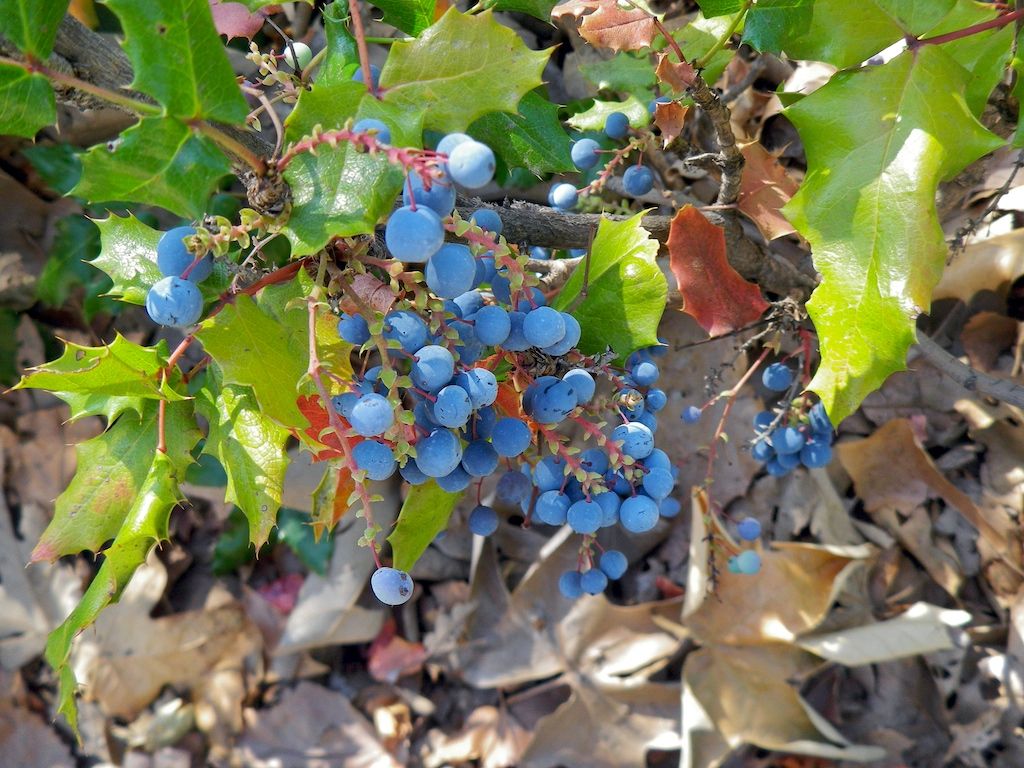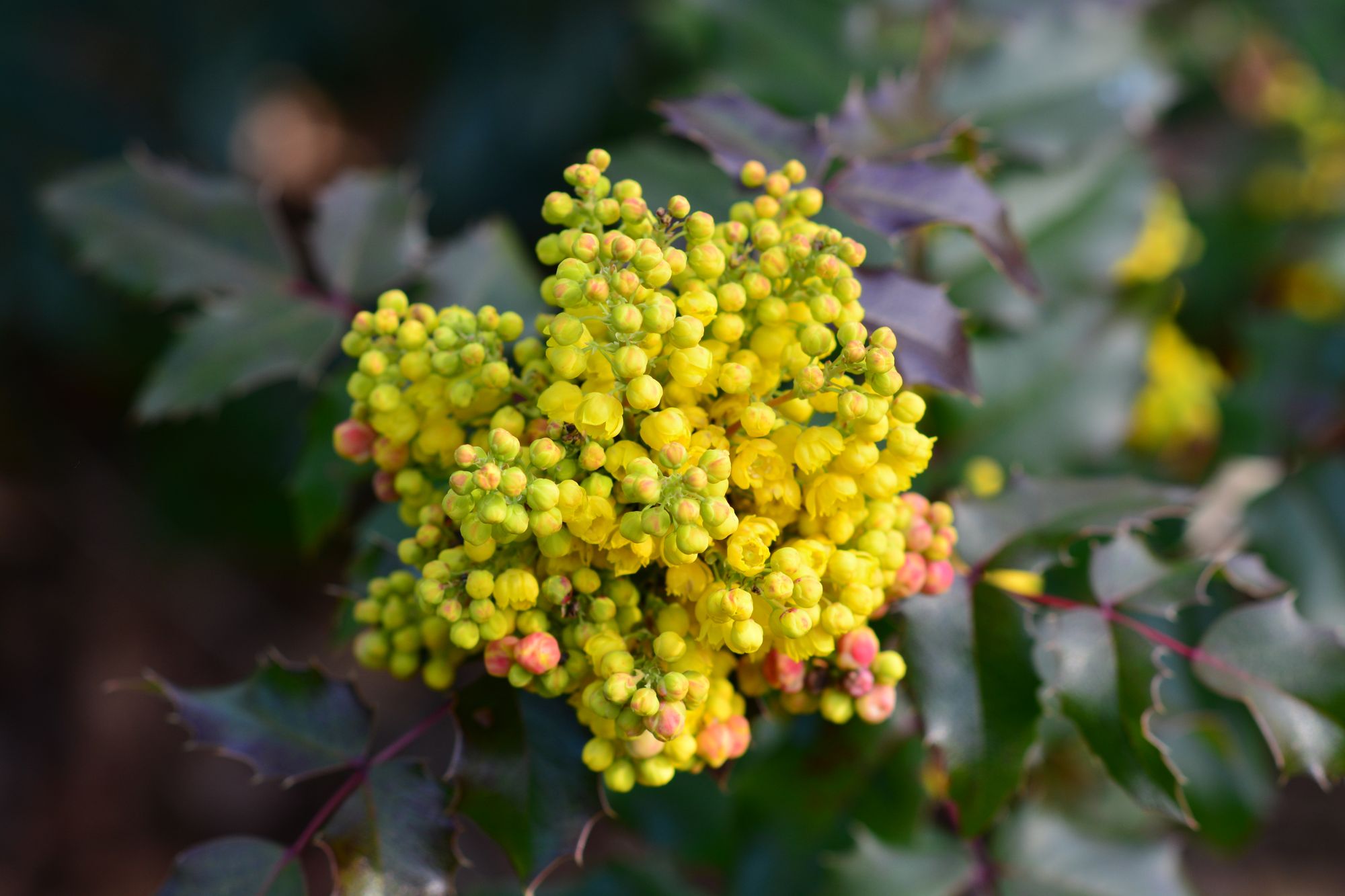How to Grow Oregon Grapes
Growing Oregon grape, or Berberis aquifolium, can be a rewarding experience for gardening enthusiasts. This versatile evergreen shrub is native to western North America and is best known for being the state flower of Oregon.

Table of Contents
It thrives in shady spots and offers various therapeutic benefits, with its vibrant yellow roots containing antimicrobial and hepatic medicinal properties.
Starting from seeds or cuttings, Oregon grape can be grown into low-lying ground covers or taller upright shrubs that reach up to 15 feet in height and 12 feet in width.
To ensure the successful cultivation of this adaptable plant in your garden, following specific planting, pruning, and maintenance guidelines is essential.
As you continue learning to grow Oregon grapes, you'll discover its many uses and beauty in your garden landscape.
About Oregon Grapes
Oregon grape (Mahonia aquifolium), holly-leaved barberry or mountain grape, is a broadleaf evergreen shrub native to western North America.
It is the state flower of Oregon and grows well in shadier spots, making it a popular choice for gardens in the region.
This attractive plant produces clusters of small yellow flowers in the spring and bluish-black berries in the fall, often called "grapes."
Oregon grape is a versatile plant, with some species growing as low-ground covers, while others, like Mahonia aquifolium, can reach up to 15 feet tall and 12 feet wide, making it an excellent addition to your garden for visual appeal and functionality.
Planting Oregon Grapes
To begin planting your Oregon grape (Mahonia aquifolium), selecting a suitable location in your garden or landscape is essential.
The plant thrives in partial shade to full sun, but it's better to choose a spot with some shade if you live in a particularly hot or dry area.
Your Oregon grape will adapt to various soil types, but it's best to prepare the ground with well-draining soil to prevent root rot and ensure optimal growth.
Start with Oregon grape seeds or young plants from a nursery when planting.
For seeds, plant them in containers with moist, well-draining soil and provide a consistent temperature and steady light exposure.
Once the seedlings grow and develop roots, transplant them into your garden or larger containers in the desired area.
When planting young Oregon grape plants, dig a hole slightly deeper and larger than their existing roots, gently place the plant inside, and firmly cover the roots with soil.
Remember to water the plant well after transplanting to encourage root establishment and growth.

Caring for Oregon Grapes Plant
Sun and Temperature
Oregon grapes (Mahonia aquifolium) thrive in various light conditions, from partial shade to full sun.
They can handle temperature fluctuations and even tolerate wind, making them a resilient shrub choice.
Water and Humidity
Once established, these shrubs are relatively drought-tolerant, but ensuring regular watering during the first year will help root development.
After that, moderate irrigation will suffice to keep your Oregon grape healthy and thriving.
Soil
The ideal soil for Oregon grapes is well-draining, slightly acidic, and rich in organic matter. Mixing compost into the planting hole will give your plant the nutrients necessary for optimal growth.
Fertilizer
Fertilize your Oregon grape once a year in late fall using a granular fertilizer at 2 lbs per 100 square feet in the plant bed. This will help promote healthy growth and berry production.
Repotting
If you're growing your Oregon grape in a container, repot it every few years to provide fresh soil and prevent root-bound issues. Choose a well-draining pot with adequate room for root growth.
Pruning and Propagation
Prune your shrub occasionally to remove dead or damaged wood and maintain its size and shape.
To propagate Oregon grape, you can take cuttings or remove suckers from the base of the plant.
Troubleshooting Plant Problems
Growing Problems
Oregon grape plants can struggle in conditions that are too sunny or windy. Ensure the plants have partial shade and protection from strong winds for optimal growth.
Pay attention to watering schedules, as overwatering and drought can cause issues. Keep the soil consistently moist but not soggy.
Fertilizer application should be carefully managed to avoid any imbalances.
If you notice poor growth or yellowing leaves, consider amending the soil with organic compost to provide the necessary nutrients.
Pests and Diseases
Pests like whiteflies can be an issue for Oregon grape plants. Check for infestations regularly and use insecticidal soap or other organic methods for control.
Birds may be attracted to the ripe berries, so consider netting to protect your fruit if necessary.
Diseases are relatively rare for Oregon grape plants, but monitoring for any signs of infection is essential.
Remove and dispose of infected parts or use organic fungicides if needed.
Companion Planting
Partner your Oregon grape plant with other plants with similar growing requirements, such as partial shade, well-draining soil, and moderate water needs.
Good companions include ferns, asters, and other native shrubs or perennials that attract pollinators like bees and butterflies.
By diversifying the planting area, you can help create a healthy ecosystem that naturally deters pests and diseases while supporting beneficial wildlife at the same time.
Conclusion
Growing Oregon grape (Mahonia aquifolium) can be a rewarding experience, especially if you're fond of attractive, evergreen shrubs that yield edible berries.
As the state flower of Oregon, this versatile plant offers various benefits, such as providing food for wildlife and sporting stunning foliage that changes color throughout the seasons.
Your Oregon grape plants can thrive even in shadier locations with proper care and attention, making them a popular landscaping choice.
Consider factors like soil type, moisture levels, and sunlight exposure to ensure your plants' best possible growth and health.
Frequently Asked Questions
What is the ideal planting environment for Oregon Grape?
Oregon Grape thrives in well-draining soil with a pH range of 5.0 to 8.0. Ensure adequate moisture is provided; these plants prefer consistently moist but not waterlogged conditions.
How to propagate Oregon Grape from seeds?
To propagate Oregon Grape from seeds, collect ripe berries and remove the seeds by gently squishing the berries. Plant the seeds in a well-draining soil mix, about 0.5 inches deep, and keep the soil moist until germination occurs.
Can Oregon Grape thrive in different light conditions?
Yes, Oregon Grape can grow in various light conditions. It does well in partial to full shade but can also tolerate full sun exposure in some cooler climates.
What are common diseases affecting Oregon Grape plants?
Oregon Grape plants are generally hardy and disease-resistant. However, they can be susceptible to fungal diseases, such as leaf spots and powdery mildew, especially under poor air circulation or overly damp conditions.
What are some practical uses of Oregon Grape?
Oregon Grape is prized for its holly-like foliage, which provides year-round color and structure to gardens. The berries can also be used to make jams, jellies, or wine, and the root bark has medicinal properties, such as antimicrobial and anti-inflammatory effects.
Where can I purchase Oregon Grape plants?
You can purchase Oregon Grape plants from local nurseries or garden centers specializing in native plants. Alternatively, consider visiting online nurseries, like Strictly Medicinal Seeds, where you can buy seeds or young plants.


